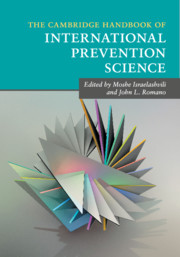Book contents
- The Cambridge Handbook of International Prevention Science
- The Cambridge Handbook of International Prevention Science
- Copyright page
- Dedication
- Contents
- Figures
- Tables
- Contributors
- Foreword
- Acknowledgments
- The Nature of Prevention Science
- Part I The Essence of Prevention Science
- Foundations
- Methodology
- 7 International Standards on Drug Use Prevention
- 8 Methodological Issues in Outcome Evaluation of Complex Interventions Aiming at Lifestyle Change
- 9 Methodology and Statistical Approaches for Conducting Valid and Reliable Longitudinal Prevention Science Research
- Implementation
- Expansion
- Part II The Globalization of Prevention Science
- Index
- References
7 - International Standards on Drug Use Prevention
Tools to Support Policy Makers Globally to Implement an Evidence-Based Prevention Response
from Methodology
Published online by Cambridge University Press: 21 January 2017
- The Cambridge Handbook of International Prevention Science
- The Cambridge Handbook of International Prevention Science
- Copyright page
- Dedication
- Contents
- Figures
- Tables
- Contributors
- Foreword
- Acknowledgments
- The Nature of Prevention Science
- Part I The Essence of Prevention Science
- Foundations
- Methodology
- 7 International Standards on Drug Use Prevention
- 8 Methodological Issues in Outcome Evaluation of Complex Interventions Aiming at Lifestyle Change
- 9 Methodology and Statistical Approaches for Conducting Valid and Reliable Longitudinal Prevention Science Research
- Implementation
- Expansion
- Part II The Globalization of Prevention Science
- Index
- References
- Type
- Chapter
- Information
- The Cambridge Handbook of International Prevention Science , pp. 134 - 159Publisher: Cambridge University PressPrint publication year: 2016
References
- 4
- Cited by



